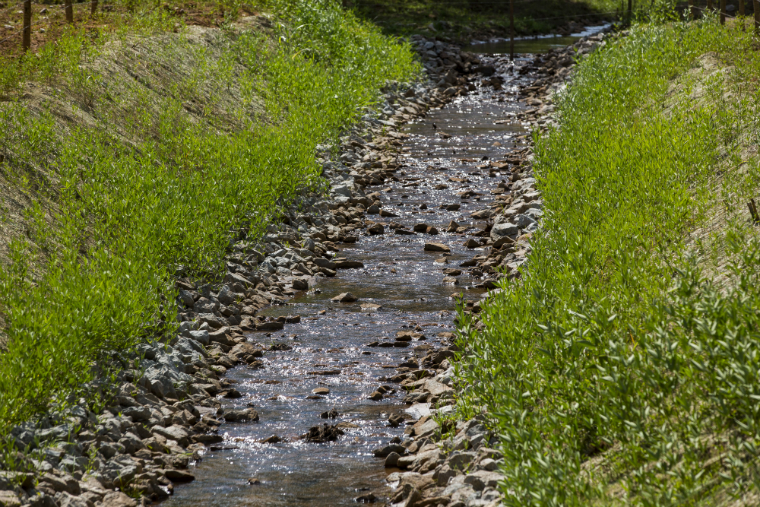70 of the 101 watercourses have been recovered so far by the Renova Foundation works
One of the objectives of the Renova Foundation Program for Revegetation, Riprap and Other Methods is the recovery of the tributaries of the Doce River. Therefore, the Environmental Tributaries Recovery Project was created which acts on two fronts: channel cleaning, with the removal of tailings, and physical stabilization of the watercourse. In addition, the project is premised on maintaining the original features of the tributaries, whenever possible.
These watercourses are important because they influence the water quality and quantity of the main river, since they flow into it. In total, the Doce River has 101 tributaries, mostly located in the regions of Mariana and Barra Longa, Minas Gerais. So far, 70 of them have been recovered by the project. All the tributaries are expected to be recovered by June 2017
The idea is that after the channel cleaning and physical stabilization of the watercourse, the works on the tributaries pass on to the recovery phase of riparian forests and habitats. To date, 65% of the priority areas on the banks of the Gualaxo do Norte River and the Carmo River (tributaries of the Doce River) have been replanted and 33% of the projects for non-priority areas have already been submitted.

Restoration of tributaries involves gutter cleaning, revegetation and rockfill. | Source: Disclosure
MONITORING METHODOLOGIES
In light of the progress of the project, a monitoring initiative has started to examine the effectiveness of the works. The goal is to quantify the changes in the vegetation density, water quality and improvement of soil characteristics through methods ranging from field observations, laboratory analyses to the capturing of images by drones.
“All methods that measure the progress of the efforts are relevant to the technical teams and to society. We are extremely concerned about generating knowledge and making it available to the public, so that more people can take advantage of available technologies”, says the agronomist Leonardo Ferreira, specialist of the Program for Revegetation, Riprap and Other Methods
